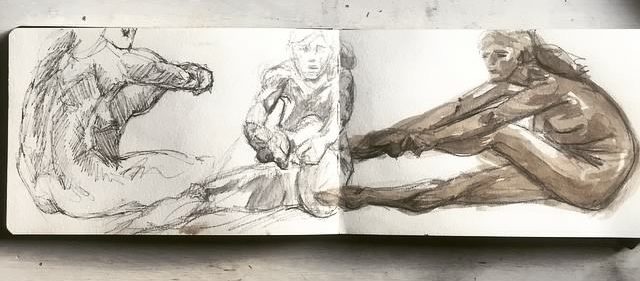Representing the human figure is one of the most natural instincts for anybody who picks up a pencil. The first visual art forms depicted humans, in their most simple and symbolic self. Through art history the representation of the human body evolved in many different directions and shapes, from simple archaic forms to detailed studies and symbolic abstractions. Whatever the kind of figure drawing attracts you the most there are some basic exercises and practices you can use to develop your figure drawing practice and grow into it.
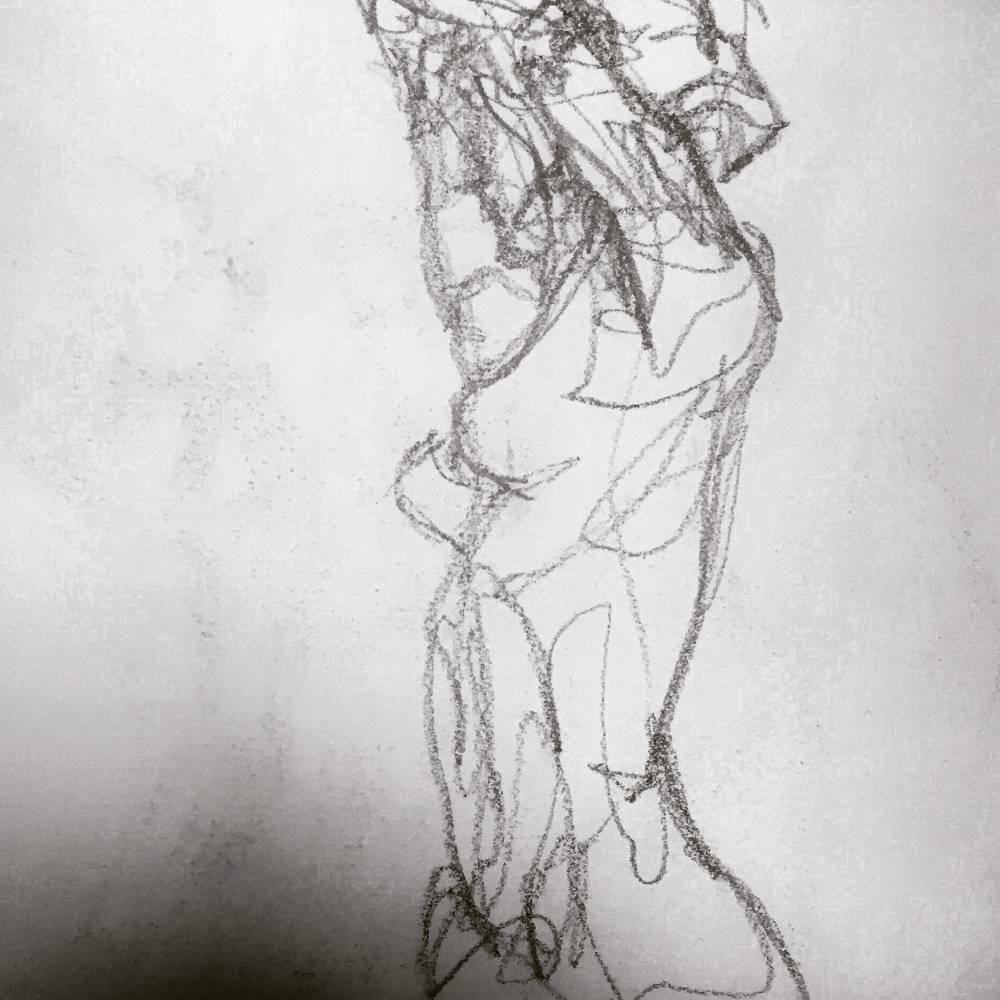
Gesture drawing
The fundamental quality of a body is movement, and no other drawing practice focuses on movement as much as gesture drawing. When we practice gesture, the focus is not on the shape or the lines that define it, but on the movement, the dynamism expressed by the body in front of us, and the intention existing behind it.
Gesture drawing is the transcript of how a body moves in space, the shorthand for movement and aliveness of the body.
There are many different ways one can approach gesture drawing, many different styles and patterns. I want to share with you two of my favourite ones, one more suitable for beginners and one that can be used by people who have already a solid anatomy base.
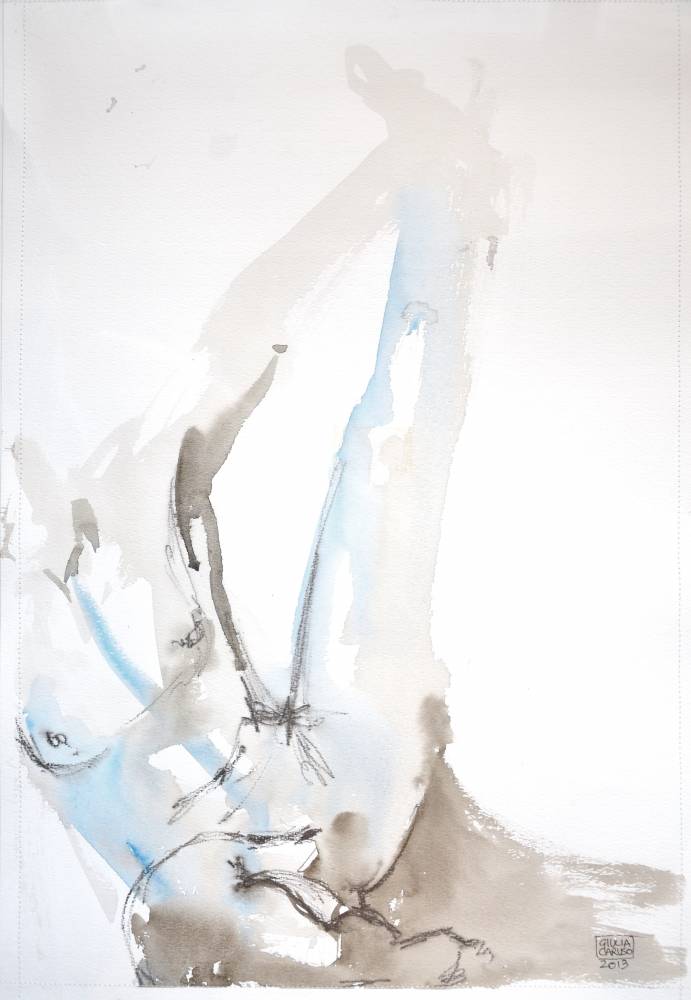
Dynamic lines gesture study:
- Use a wide medium, like a broken pastel or a brush with paint.
- Draw the main dynamic lines of the figure, first following the line from the head through the spine, then the torso and hips, then the limbs.
- Focus on marking with precision the line of the shoulders and the line of the hips, but keep the limbs more loose and just stylized with wide strokes.
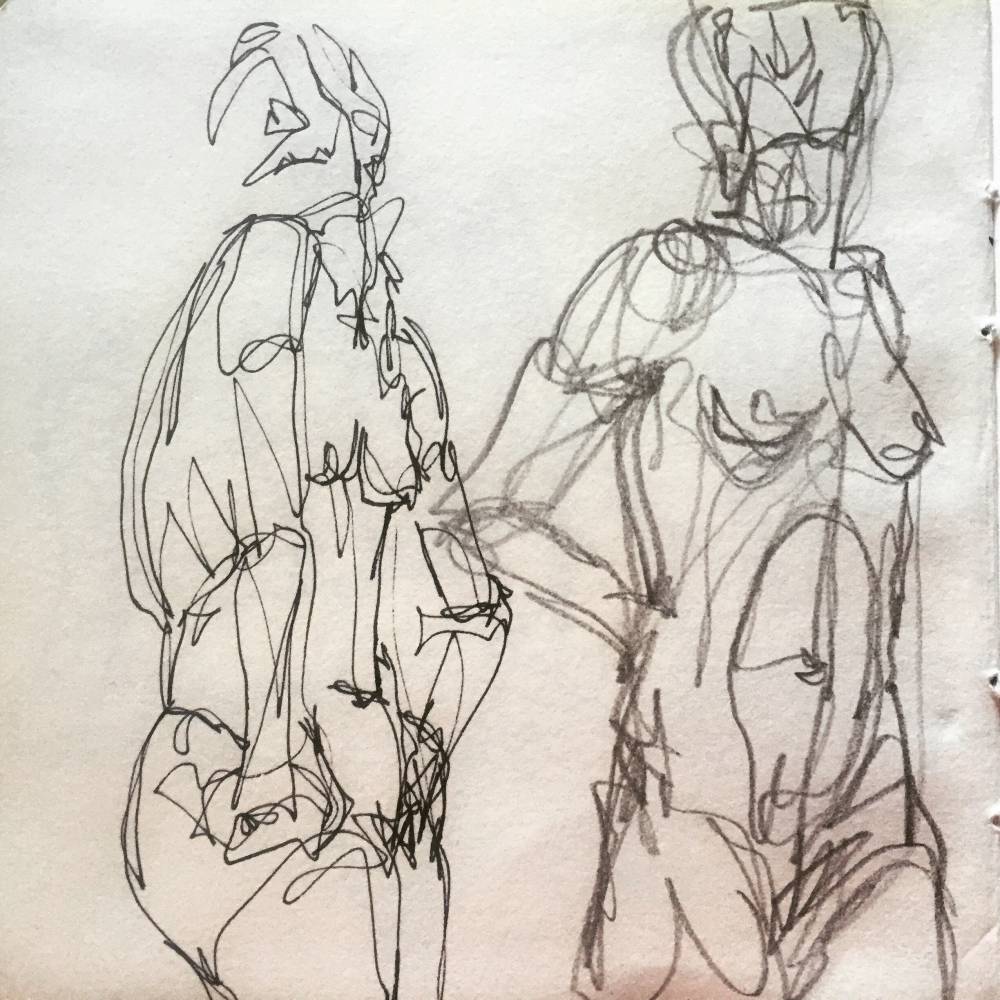
Anatomy study gesture:
- Use a smooth medium, like a soft pencil or an ink pen.
- Draw the figure with a continuous uninterrupted line, flowing across muscle shapes and joints as if you’re touching them.
- Focus on the volume of the muscle, on how its roundness and shape changes depending on the pose, the extension and contraction, and the tension caused by each movement.
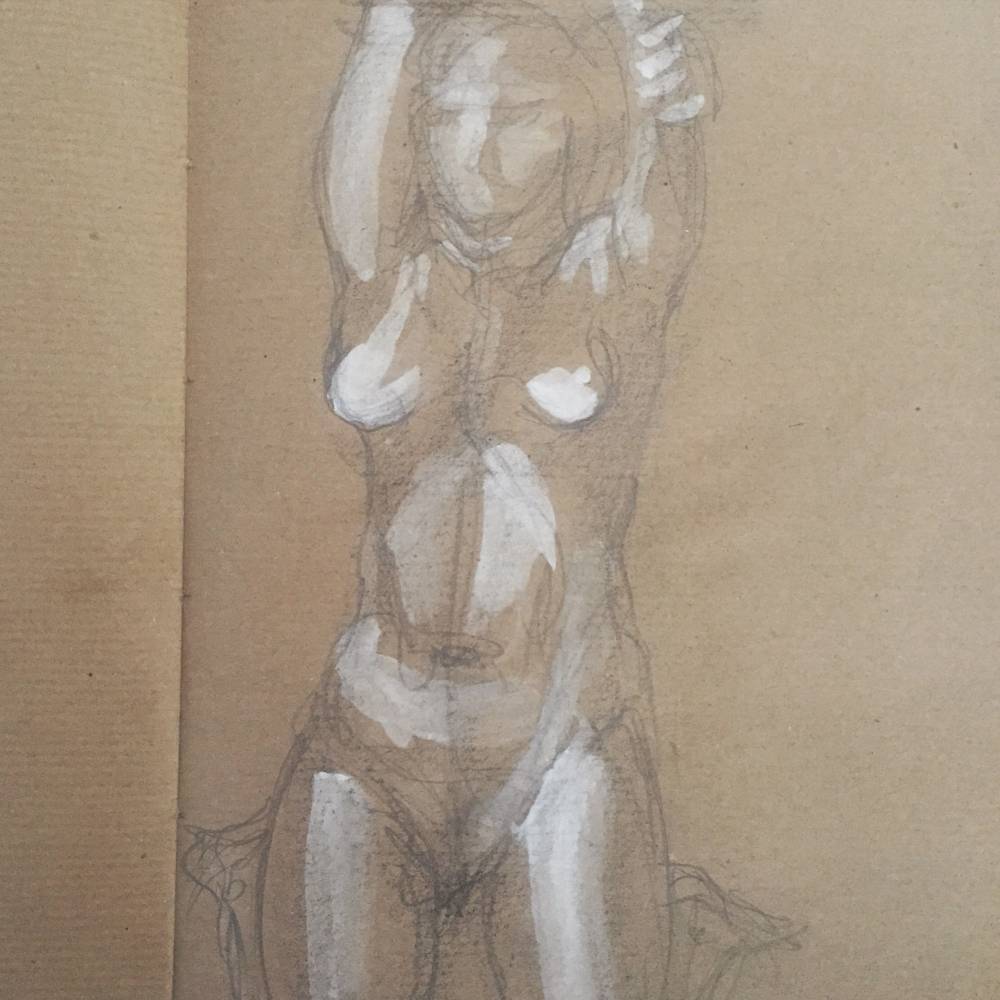
The main principle of gesture drawing is to be fast and loose in your marks, in order to be able to catch the movement on paper efficiently and with quick strokes.
Gesture drawing is always a good first step to start putting the subject on paper, before polishing it and moving on to tonal values and details.
Drafting the figure using gesture drawing will allow you to have more natural and less rigid poses, and convey a wider range of expressions and liveliness in your figures.
